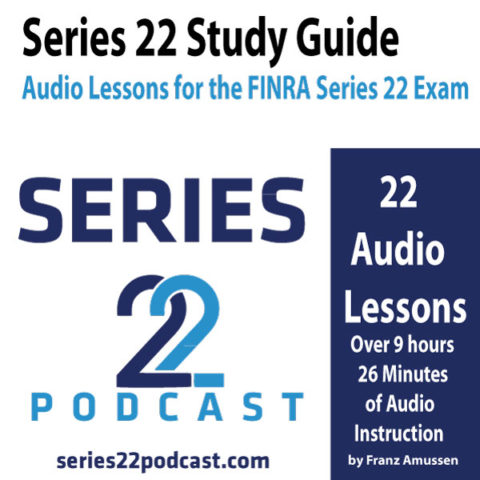Lesson 18 New Account Regulations:
FinCEN is a part of the U.S. Department of the Treasury and it seeks to safeguard the nation’s financial system. They send blacklist to FINRA member firms every few weeks and the principal must check these lists against their client base within 14 days and report.
After the attacks on 9/11, FINRA member firms must develop a business continuity plan that provides for backup facilities that can continue their operations in case their main business is compromised. It should include a plan for alternate means of communication with customers as well, and ways to back up data. This plan must be reviewed annually by senior management.
The Sabine’s-Oxley Act is also known as the Public Company Accounting Board and Investor Protection Act of 2002. It created a group called the Public Company Accounting Oversight board to audit and regulate accounting firms’ activities when they relate to publicly traded companies. It requires management to vouch for the accuracy of their company’s financial reports and sign their names to it. That have to certify that they have read the report, that the information there is accurate to the best of their knowledge, and that nothing has been omitted.
The Uniform Securities Act helped standardize state regulators. Before the Act, each state was completely different in this regard. It sets minimum qualification standards for each state’s securities administrator, who is sometimes the state’s attorney general.
A tender offer is created by a person or firm who wants to purchase all or part of an issuer’s offering for a certain price. The SEC has specific guidelines that regulate these transactions. The offer has to be open for 20 business days from when it is announced. If anything about the offer changes, then it must remain open for an additional 10 days from the changes. The management of the company needs to let the shareholders know what they think of the offer.
Before a representative opens up a new account for a customer, they have complete a new account form. One of the things specified on this form is the account type, of which are there are five main types: individual, joint, corporate, trust, partnership. They need to collect as much information about the customer as possible, including their demographic information, their full name and address, their contact information, their social security number, their net worth, their investments goals, their estimated annual income, their age, their citizenship. They do not have to include their educational information.
The principal of the firm has to review the application and accept the new account in writing before the first trade can be executed. They sign a new account card to make it official. This card also includes the name of the representative who introduced the account to the firm. Once the new account has been created, the firm must send the new customer a new account form within 30 days. After this, they need to verify account information at least once every three years. Changes to the pertinent information should be updated as quickly as possible, including if their martial status changes.
Customers who do not want to disclose their financial information can still open an account under some circumstances, if there is evidence the customer can afford to maintain the account.
Once a customer has a new account, they have to decide where their securities are to be held from among four different options: transfer and ship, transfer and hold in safekeeping, hold in street name, or receipt versus payment/delivery versus payment.
Transfer and ship means that the securities will be registered in the customer’s name and then shipped through the mail to the customer’s address of record.
Transfer and hold in safekeeping means that they will be registered in the customer’s name, but then they will be held at the brokerage for safekeeping, sometimes requiring a fee. Sometimes their is an option to hold securities electronically through the Direct Registration System.
Hold in street name means that the securities are registered in the name of the brokerage firm as the nominal owner and then the customer is the beneficial owner. This can make transfer of ownership easier.
Receipt vs. Payment/Delivery vs. Payment is a method done for trusts or institutional accounts. These sometimes require that securities are deliver before releasing payment for those securities. They are cash-on-delivery accounts.
If you are ready to get serious and want the full series of Series 22 Audio Lessons…
In order to take the Series 22 Exam you must also Pass the SIE Exam
We also have audio lessons for the following exams:
Podcast: Play in new window | Download








